that's not grammatical I know you're going for Imperial defense ( Kaiserliche Wehr) for the name of Imperial German army but their official name is literally just the German army https://en.wikipedia.org/wiki/Imperial_German_ArmyKaiserwehr
You are using an out of date browser. It may not display this or other websites correctly.
You should upgrade or use an alternative browser.
You should upgrade or use an alternative browser.
Photos of the Kaiserreich
- Thread starter pattontank12
- Start date
Well done!The start of the central American Civil War
View attachment 768508
a Escuela Politécnica national military academy mutineer
The defeat of the revolutionary republic of Nicaragua in Central American unification wars sent President Augusto César Sandino and his allies into exile in Mexico throughout the 40s; the national sovereignty front and associates kept a low profile. concurrently in The newly formed central American republic, The remaining socialist and leftist groups formed into the National revolutionary party however their activities are suppressed by the new government alongside liberal groups such as the union party. By the 1950s the economic situation in Central America began to deteriorate as the prices of agricultural exports such as cotton and coffee dropped. In 1957 The national revolutionary party got in contact with the national sovereignty front which has since late 40s absorbed the liberal revolution and peasant parties into itself, this led to discussion between the leaders of the National revolutionary party and the sovereignty front. in a meeting between Ramon Raudales representing National sovereignty front and Carlos Fonseca Amado representing the revolutionary party agreed for a merger of the two into a united organization
View attachment 768510
Carlos Fonseca
View attachment 768513
founding of the people's revolutionary party
At the first national Congress of the People's revolutionary party in Mexico City formally dissolved both the national sovereignty front and National revolutionary party . Both old names continue to be used as a form of cover for the new party, it was decided at the Congress that they would use the armed struggle as opposition to the Ubico dictatorship. In 1959 the People's Revolutionary party approved a "people's war"
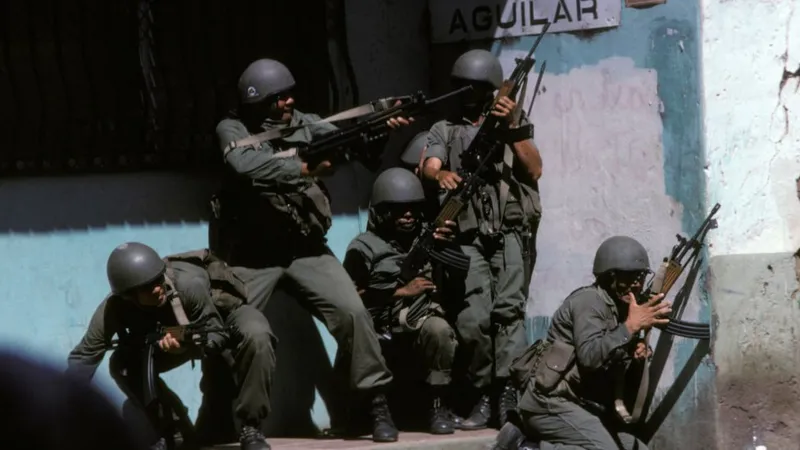
National guard of Central America crushing the Managua uprising in the early stages of the Civil War
the Front and the popular army
with the adoption of the people's war resolution, the strategy for armed struggle was finalized with it came the formation of the Military Department to control the military aspects of the struggle its first action was to launch A series of uprisings ranging from the Managua uprising to the mutiny at Escuela Politécnica national military academy this led into a form several base areas along the border with Mexico and in the departments of Izabal and Zacapa As well as in the Sierra de las Minas verdure they also established base areas in Las Segovias. their force was initially called Milicias Populares Anti Ubico or Anti Ubico Popular Militias (MILPAU) ; it was later changed to the popular army of Central America (ejercito popular de centroamerica;EPCA) in 1961. The "2d Liberation Battalion" ambushed two companies of Central American soldiers in September 1959, the first large unit military action of the war.This was considered the beginning of the "armed struggle". The PPR created the Centroamerican liberation front(Frente de liberación centroamericano;FDLCA ) as a "united front", or political branch intended to encourage the participation of non-socialists.The group's formation was announced by Radio and its ten-point manifesto called for, "overthrow the disguised colonial regime of the imperialists and the dictatorial administration, and to form a national and democratic coalition administration."Violence between the FDLCA and government forces soon increased drastically from 180 clashes in January 1960 to 545 clashes in September.
@Brave Soldier 10-4
This would imply that either Russia is syndie and joined the war in 1939 or independently declared war on Germany in 1939, which would be a very poor choice. Is there further lore?
German medics treating a seriously wounded Russian soldier during the Second Weltkrieg, 1939.
This would imply that either Russia is syndie and joined the war in 1939 or independently declared war on Germany in 1939, which would be a very poor choice. Is there further lore?
Agree. Even if Russian army would be in better condition than in OTL (quiet likely since best generals are not shot) Russia wouldn't be really ready for fight even if France would distract parts of Germans.
Better condition of top leadership will not help when the quality of the men, equipment, and replaceability is significantly worse. Also many less men to draw from (even with famine in the 30s and worse civil war, the RSFSR Population grew significantly, and the USSR has about 50 million others) and there is very bad production base which will prevent the Russians from making as much artillery, shells, or tanks. Even if the Russians start a Stalinist crash-industrialization, it would be in 1936 and they wouldn't have enough time by 1939 to have enough industrial power to fight the Germans head on. It may be that the generals are better, but the meat of the army would be less equipped, less motivated, and probably not even as well trained, since the Soviet training of recruits before WWII IRL was pretty good (they had a very large standing professional army and the quality of training decreased until late 1943).Agree. Even if Russian army would be in better condition than in OTL (quiet likely since best generals are not shot) Russia wouldn't be really ready for fight even if France would distract parts of Germans.
OTL (quiet likely since best generals are not shot

Red Russian Emigres
Bolshevik émigrés, sometimes referred to as Red Russian émigrés, are a community of exiles who fled from the territory of the former Russian Empire after their defeat in the Russian Civil War. since then, they have been scattered to various areas of the world, with some finding service in the...
Deleted member 82792
In this particular TL Russia attacked separatelyThis would imply that either Russia is syndie and joined the war in 1939 or independently declared war on Germany in 1939, which would be a very poor choice. Is there further lore?

The third prototype of the Ki 116. It was conceived as a twin-engine, high-performance fighter, but the Imperial Army saw no role for the design, even if it was later on adapted to operate as a heavy fighter.
Chairman Arthur Horner, pictured in his office during the Second Great War (as it is called in British textbooks.) Despite weathering the aggression of both the Entente and Germany, Horner was not re-elected after the war, losing out to Clement Attlee. Despite this, he would remain a respected elder statesman in the Union of Britain for the rest of his days.
CSA troops arrive in Bristol to assist the Internationale’s war effort, 1941.

Two worn-out North American P-45E withdrew from service after the Unionist campaign in Georgia.
Deleted member 82792
General Eisenhower with an M1919 Browning machine gun that he fired during an inspection of an American Federalist infantry unit during the Second American Civil War
A Japanese-American soldier and his mother in a strawberry field in California, PSA. C.1941
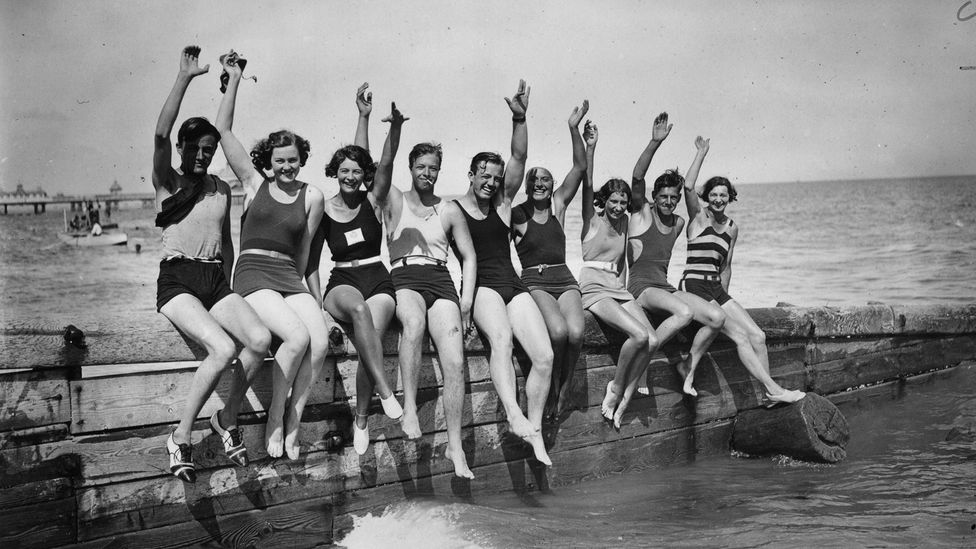
Members of a trade union enjoying a group holiday in Eastbourne, UoB. C.1933
Share:
